I have an application which has a bottom menu bar which users can use to switch between 4 home page tabs. It's working fine like below.
The only problem I'm having is it showing back button when I switch between different fragment. Since all these fragments are at the same level I do not want it to behave like that.
This is my implementation.
MainNavigationActivity
class MainNavigationActivity : AppCompatActivity() {
private lateinit var navigationController: NavController
override fun onCreate(savedInstanceState: Bundle?) {
super.onCreate(savedInstanceState)
setContentView(R.layout.activity_main)
initialization()
}
private fun initialization(){
navigationController = Navigation.findNavController(this, R.id.hostFragment)
setSupportActionBar(toolbar)
NavigationUI.setupWithNavController(bottomNavigationBar,navigationController)
NavigationUI.setupActionBarWithNavController(this,navigationController)
}
override fun onBackPressed() {
onSupportNavigateUp()
}
MainNavigationActivity Layout
<RelativeLayout
xmlns:android="http://schemas.android.com/apk/res/android"
xmlns:tools="http://schemas.android.com/tools"
xmlns:app="http://schemas.android.com/apk/res-auto"
android:layout_width="match_parent"
android:layout_height="match_parent"
tools:context=".activities.MainNavigationActivity">
<androidx.appcompat.widget.Toolbar
android:id="@+id/toolbar"
android:layout_width="match_parent"
android:layout_height="wrap_content"
android:layout_alignParentTop="true"
android:background="@color/colorPrimary"
app:popupTheme="@style/ThemeOverlay.AppCompat.Light"
app:theme="@style/ThemeOverlay.AppCompat.Dark.ActionBar"/>
<fragment
android:id="@+id/hostFragment"
android:name="androidx.navigation.fragment.NavHostFragment"
android:layout_width="match_parent"
android:layout_height="wrap_content"
android:layout_below="@id/toolbar"
android:layout_above="@id/bottomNavigationBar"
app:defaultNavHost="true"
app:navGraph="@navigation/main_navigation_graph" />
<com.google.android.material.bottomnavigation.BottomNavigationView
android:id="@+id/bottomNavigationBar"
android:layout_width="match_parent"
android:layout_height="wrap_content"
android:layout_alignParentBottom="true"
android:background="@android:color/white"
app:menu="@menu/bottom_navigation_menu"
app:labelVisibilityMode="labeled"/>
</RelativeLayout>
bottom_navigation_menu.xml
<menu xmlns:android="http://schemas.android.com/apk/res/android">
<item
android:id="@+id/navigation_home"
android:state_checked="true"
android:color="@color/colorPrimary"
android:title="@string/navigation_home"
android:icon="@drawable/ic_bottom_bar_menu_home"/>
<item
android:id="@+id/navigation_offers"
android:state_checked="false"
android:color="@color/gray"
android:title="@string/navigation_offers"
android:icon="@drawable/ic_bottom_bar_menu_offers"/>
<item
android:id="@+id/navigation_my_bookings"
android:state_checked="false"
android:color="@color/gray"
android:title="@string/navigation_my_bookings"
android:icon="@drawable/ic_bottom_bar_menu_bookings"/>
<item
android:id="@+id/navigation_my_account"
android:state_checked="false"
android:color="@color/gray"
android:title="@string/navigation_my_account"
android:icon="@drawable/ic_bottom_bar_menu_account"/>
</menu>
The Ids are given to the fragments in the navigation graph and the ids in the menu.xml are the same. that's how it identifies the correct fragment and switch to that fragment correctly.
How can I remove this back button on the toolbar in home screen level?
